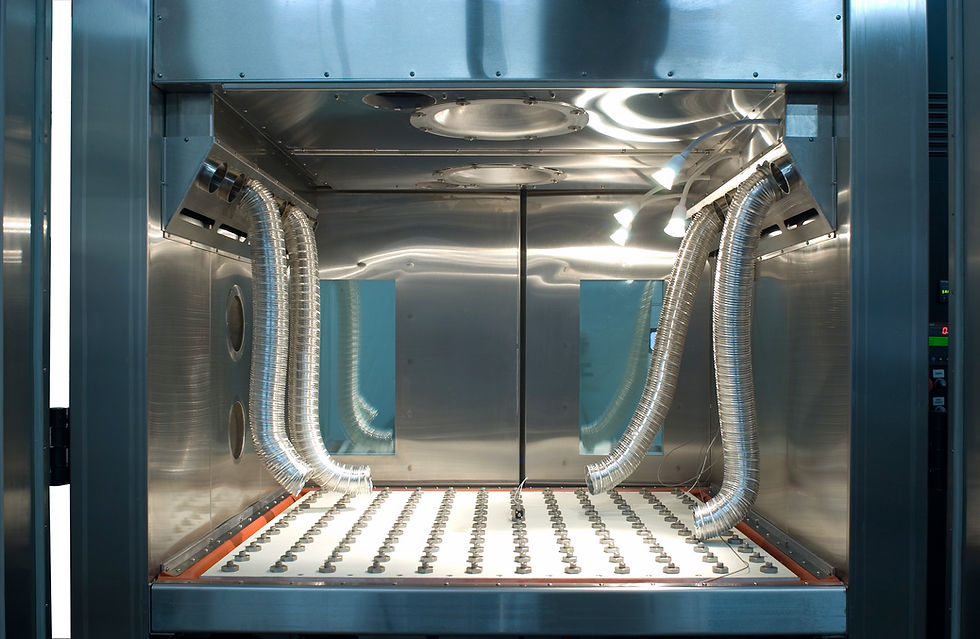What You Need to Know About Environmental Testing
- Sep 1
- 4 min read
Environmental testing plays a crucial role in ensuring the reliability and durability of products across various industries. From automotive components to aerospace systems, understanding how materials and devices perform under different environmental conditions is essential. This article explores the fundamentals of environmental testing, its significance, and practical insights for engineers and technicians involved in product validation and quality assurance.
Understanding Environmental Testing and Its Importance
Environmental testing involves subjecting products or materials to controlled environmental conditions to evaluate their performance, durability, and safety. These tests simulate real-world conditions such as temperature extremes, humidity, vibration, shock, and corrosive atmospheres. The goal is to identify potential failures before products reach the market, reducing costly recalls and enhancing customer satisfaction.
For example, automotive parts must withstand temperature fluctuations from freezing winters to hot summers. Consumer electronics require testing for moisture resistance and thermal cycling to ensure longevity. Military and aerospace components face even more stringent requirements, including exposure to high altitudes, rapid pressure changes, and intense vibrations.
Key benefits of environmental testing include:
Risk mitigation: Detecting weaknesses early prevents failures in the field.
Compliance: Meeting industry standards and regulatory requirements.
Product improvement: Data from tests guide design enhancements.
Customer confidence: Reliable products build brand reputation.
By integrating environmental testing into the development cycle, engineers can make informed decisions that improve product robustness and reduce warranty costs.

Types of Environmental Testing and Their Applications
Environmental testing encompasses a wide range of test types, each targeting specific stress factors. Understanding these tests helps in selecting the right methods for your product’s requirements.
Temperature and Humidity Testing
These tests expose products to extreme temperatures and varying humidity levels. Thermal cycling involves repeatedly changing temperatures to simulate day-night or seasonal variations. Humidity testing evaluates resistance to moisture, which can cause corrosion or electrical failures.
Example: Aerospace electronics undergo thermal shock tests to ensure they function after rapid temperature changes during flight.
Vibration and Shock Testing
Products are subjected to vibrations and sudden shocks to mimic transportation, handling, or operational stresses. This is critical for automotive parts and military equipment that experience rough conditions.
Example: Consumer electronics are tested for drop resistance and vibration to prevent damage during shipping.
Salt Spray and Corrosion Testing
Salt spray chambers simulate corrosive environments, especially for products exposed to marine or road salt conditions. This test assesses the protective coatings and material resistance.
Example: Automotive chassis components are tested for rust resistance to ensure longevity.
Altitude and Pressure Testing
Simulating high altitude or vacuum conditions is essential for aerospace and military applications. These tests verify that products maintain performance despite pressure changes.
Example: Satellite components undergo vacuum testing to ensure functionality in space.
Combined Environmental Stress Testing
Some tests combine multiple stressors, such as temperature, humidity, and vibration, to replicate complex real-world scenarios. This approach provides a comprehensive assessment of product durability.
Selecting the appropriate tests depends on the product’s intended use, industry standards, and customer expectations.

What is an ESS Chamber?
An ESS (Environmental Stress Screening) chamber is a specialized testing device used to expose products to environmental stresses such as temperature cycling and vibration. The purpose of ESS is to identify latent defects that may not be apparent during normal operation but could cause failures later.
ESS chambers combine thermal and mechanical stress in a controlled environment. For example, a circuit board might be subjected to rapid temperature changes while being vibrated to reveal solder joint weaknesses or component failures.
The benefits of using an ESS chamber include:
Early defect detection: Catching issues before products leave the factory.
Improved reliability: Ensuring only robust units reach customers.
Cost savings: Reducing warranty claims and field repairs.
ESS chambers are widely used in industries where product reliability is critical, such as aerospace, military, and automotive manufacturing.

Best Practices for Conducting Environmental Testing
To maximize the effectiveness of environmental testing, engineers and technicians should follow these best practices:
Define clear objectives: Understand what you want to achieve with the test - whether it is compliance, durability assessment, or failure analysis.
Select appropriate test standards: Use industry-recognized standards such as MIL-STD, IEC, or ASTM to ensure consistency and acceptance.
Use calibrated equipment: Ensure all testing devices, including environmental testing chambers, are properly maintained and calibrated for accurate results.
Document test conditions and results: Keep detailed records of test parameters, procedures, and outcomes for traceability and future reference.
Analyze failures thoroughly: Investigate any defects or failures to identify root causes and implement corrective actions.
Simulate real-world conditions: Design tests that closely mimic the actual environment the product will face.
Involve cross-functional teams: Collaborate with design, manufacturing, and quality teams to interpret results and improve product design.
By adhering to these guidelines, testing teams can ensure reliable data and actionable insights that drive product excellence.
Emerging Trends in Environmental Testing Technology
Environmental testing continues to evolve with advances in technology and increasing product complexity. Some notable trends include:
Automation and remote monitoring: Automated test sequences and remote data access improve efficiency and reduce human error.
Advanced sensors and data analytics: High-precision sensors combined with AI-driven analytics enable deeper insights into product behavior.
Sustainability focus: Testing for environmental impact and compliance with green standards is gaining importance.
Miniaturization of test chambers: Compact chambers allow testing of small components and prototypes with greater flexibility.
Integration with digital twins: Virtual models simulate environmental stresses alongside physical testing for comprehensive validation.
Staying updated with these trends helps engineers leverage new tools and methodologies to enhance testing programs.
Environmental testing is a vital process that ensures products meet the demands of their operating environments. By understanding the types of tests, utilizing specialized equipment like ESS chambers, and following best practices, engineers can significantly improve product reliability and customer satisfaction. Embracing emerging technologies further strengthens testing capabilities, preparing products for the challenges of today and tomorrow.



